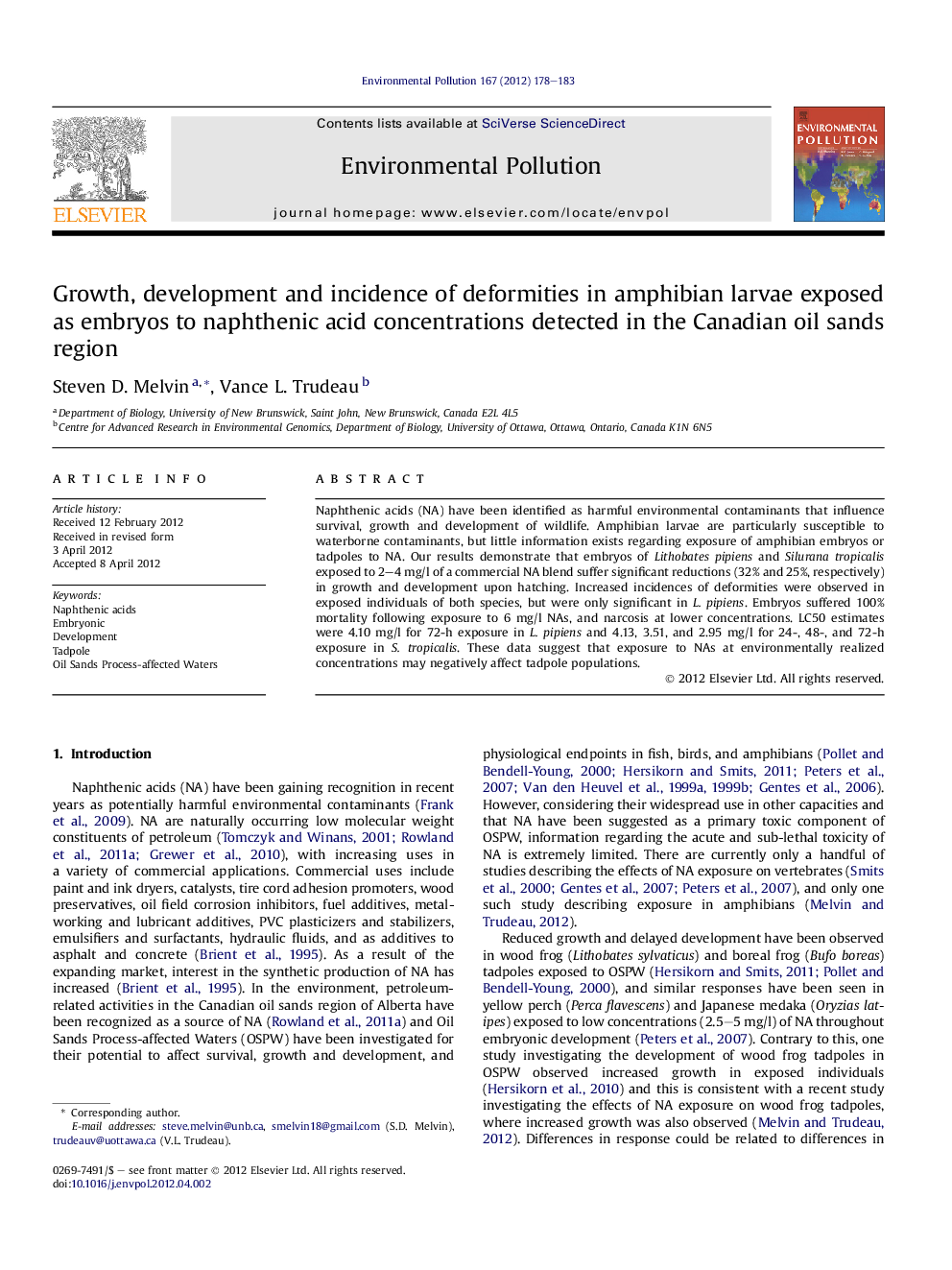| Article ID | Journal | Published Year | Pages | File Type |
|---|---|---|---|---|
| 4424568 | Environmental Pollution | 2012 | 6 Pages |
Naphthenic acids (NA) have been identified as harmful environmental contaminants that influence survival, growth and development of wildlife. Amphibian larvae are particularly susceptible to waterborne contaminants, but little information exists regarding exposure of amphibian embryos or tadpoles to NA. Our results demonstrate that embryos of Lithobates pipiens and Silurana tropicalis exposed to 2–4 mg/l of a commercial NA blend suffer significant reductions (32% and 25%, respectively) in growth and development upon hatching. Increased incidences of deformities were observed in exposed individuals of both species, but were only significant in L. pipiens. Embryos suffered 100% mortality following exposure to 6 mg/l NAs, and narcosis at lower concentrations. LC50 estimates were 4.10 mg/l for 72-h exposure in L. pipiens and 4.13, 3.51, and 2.95 mg/l for 24-, 48-, and 72-h exposure in S. tropicalis. These data suggest that exposure to NAs at environmentally realized concentrations may negatively affect tadpole populations.
► We exposed Lithobates pipiens and Silurana tropicalis embryos to NA. ► We monitored growth and development until the free-swimming tadpole stage. ► We assessed mortality, and number of deformities of surviving individuals. ► Exposure to 2 and 4 mg/l caused reduced growth and development in both species. ► Exposure to 4 mg/l caused increased number of deformities in Lithobates pipiens.
